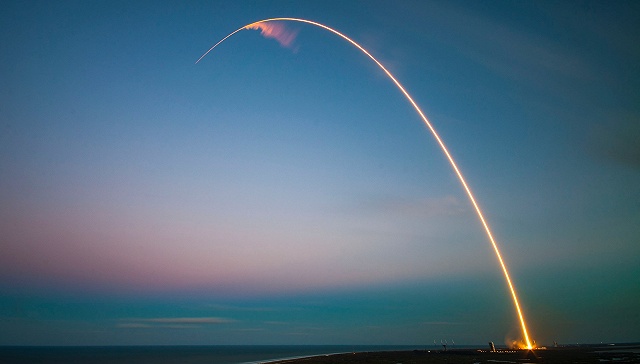British rocket launch startup Skyrora tested its new rocket engine at the end of January. The engine is made from 3D printing and fuel is extracted from waste plastic. The company claims that its engine is greener than many competitors’ products.
Editor’s note: This article comes from Interface News , author Xu Shiqi.

Image source: unsplash
In recent years, the environmentally friendly fuel for rockets has been the focus of research and innovation.
The British rocket launch startup Skyrora tested its new rocket engine at the end of January. The engine is made by 3D printing and fuel is extracted from waste plastic. The company claims that its engine is greener than many competitors’ products.
Skyrora is developing a new launch vehicle for small satellites, with its first orbital launch planned for 2022. The success of the engine test is undoubtedly one step closer to the launch target.
According to foreign media Forbes, Skyrora successfully tested a 3D printed “eco-liquid fuel rocket engine” at a test site in Fife, Scotland last week.
The power fuel comes from waste plastic. This new fuel is called “Ecosene”. The engine is said to produce 600 kilograms of usable kerosene from 1,000 kilograms of waste plastic in 24 hours. Compared to traditional kerosene RP-1 rocket fuel, it reduces greenhouse gases by 45%.

Test new engine Source: skyrora
In addition, the company said that Ecosene fuel “is particularly suitable for weather in Scotland, as the weather at the Scottish Rocket Base may cause potential problems or delays”, noting that the fuel does not need to be refrigerated and can be used for a long timeStore in the fuel tank.
Jack-James Marlow, Skyrora’s engineering manager, said in a statement: “We are using an upper stage LEO engine to validate the new fuel we produce.”
“This fuel is made of non-recyclable plastic, which should have entered landfills.”
Skyrora tested the engine several times for 30 seconds throughout the week, initially using kerosene, and then switching to new Ecosene fuel for final testing on Friday, January 31. The company tested the difference in performance by comparing two fuels.
This engine will power the final stages of the Skyrora XL launch vehicle. The Skyrora XL rocket is 22 meters high, which is a small launch vehicle compared to the 70-meter Space X Falcon 9. It can launch a variety of payloads into separated orbits up to 500 kilometers from the earth, which is a low earth orbit target range generally applicable to small satellite payloads.
Skyrora said that this test will not only allow them to evaluate the performance of the engine, but also to use the engine’s own restart capability as an appropriate track maneuver or space tug. At the same time, they added that they can help achieve a series of tasks “from clearing space debris to exploring the moon.”
In the global space race, the United Kingdom is not leading, and launching rockets in China was not allowed until 2018. Previously, British-made rockets could only be launched abroad. Skyrora is one of several companies hoping to launch in the UK in the future.
In August 2018, Skyrora successfully launched Scotland’s first commercial model rocket at Kildermorie Manor in Ross County, and then launched a two-meter Skylark Nano II rocket in July 2019, which can reach an altitude of 6 kilometers. .
In addition to the Skyrora XL under development, the company currently has two types of rockets: one is the Skylark Micro rocket with a target altitude of 40 kilometers; the other is Sky High, which the company hopes will be available before Skyrora XL debut Send Sky High into space.
Although Skyrora has not yet announced where it will launch from, it is speculated that one possible option is Unst, one of the Shetland Islands in the northern part of the British mainland. There is a privately funded launch site on Unst, and the company also A launch is being planned from its own test site in northern Scotland.